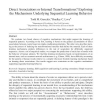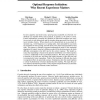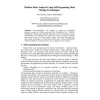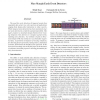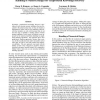14 search results - page 2 / 3 » Structure Learning in Human Sequential Decision-Making |
COGSCI
2010
13 years 5 months ago
2010
We evaluate two broad classes of cognitive mechanisms that might support the learning of sequential patterns. According to the first, learning is based on the gradual accumulation...
NIPS
2008
13 years 6 months ago
2008
In most cognitive and motor tasks, speed-accuracy tradeoffs are observed: Individuals can respond slowly and accurately, or quickly yet be prone to errors. Control mechanisms gove...
GI
1998
Springer
13 years 9 months ago
1998
Springer
"KnowledgeMiner" was designed to support the knowledge extraction process on a highly automated level. Implemented are 3 different GMDH-type self-organizing modeling algo...
CVPR
2012
IEEE
11 years 7 months ago
2012
IEEE
The need for early detection of temporal events from sequential data arises in a wide spectrum of applications ranging from human-robot interaction to video security. While tempor...
FLAIRS
2010
13 years 7 months ago
2010
Nowadays, graph-based knowledge discovery algorithms do not consider numeric attributes (they are discarded in the preprocessing step, or they are treated as alphanumeric values w...
